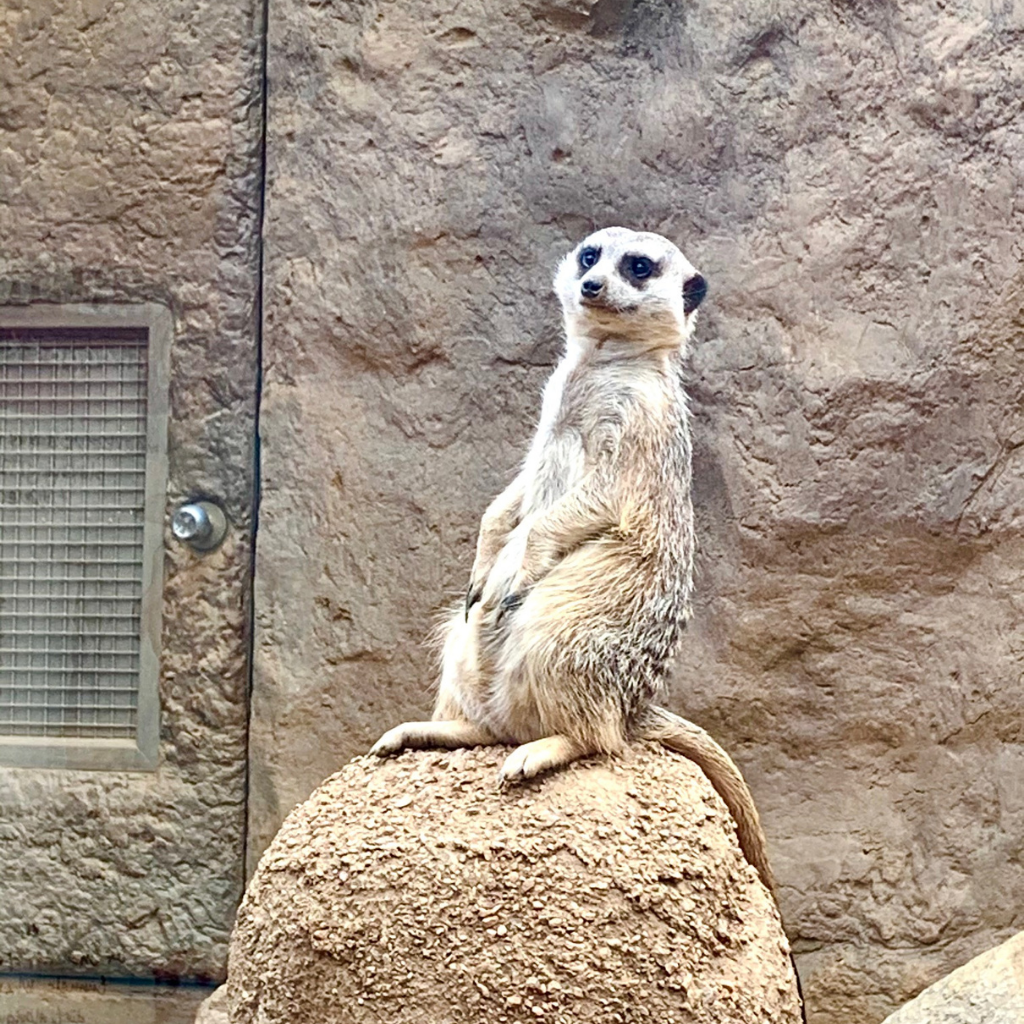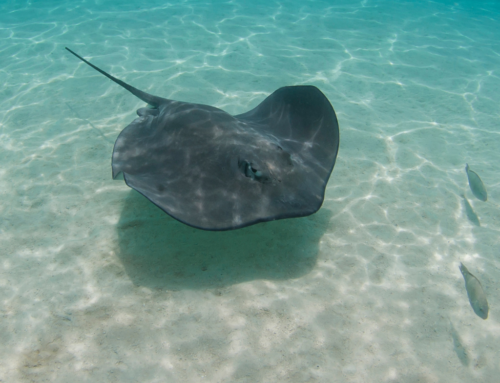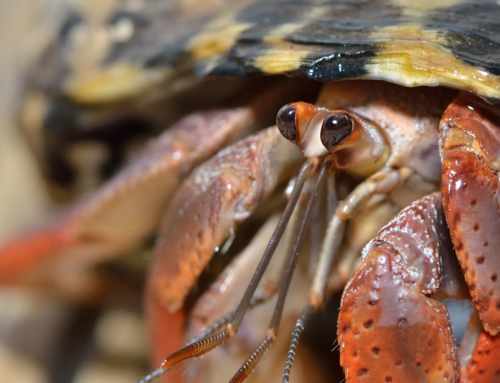
A huge portion of my family lives in Indianapolis, but I had not visited the Indianapolis Zoo in years! I got to visit again in October 2020 to check out some of their renovations over the years. I loved the majority of the zoo’s exhibits and conservation efforts. However, there was a glaring problem you should know about before visiting the Indianapolis Zoo.
About Indianapolis Zoo
The Indianapolis Zoo is home to over 3,800 animals and 320 different species. It’s run entirely as a non-profit, funded solely by guest admissions, events, and donations. The AZA-accredited zoo opened in 1965 and was one of the first zoos in the United States to employ a full-time education staff. Considering the rocky history of zoos, this is incredible! They currently participate in three different conservation research projects: the International Elephant Foundation, the International Iguana Foundation, and the International Rhinoceros/Rhino Foundation. They contribute globally to conservation research, climate change research, and breeding projects for endangered species. Overall, the Indianapolis Zoo seemed like an ethical place to visit!

This meerkat greeted everyone as they entered the desert section of the zoo!
Visiting Indianapolis Zoo’s Exhibits
The Indianapolis Zoo is separated into various biomes of the world, each of which participates in its own conservation and breeding programs. The biomes are: Oceans, Forests, Deserts, Plains, and the White River Gardens botanical garden. There is also a massive National Orangutan Research Center and “Flights of Fancy” bird center.
My favorite area of the park had to be the desert building. Half of the building was an open-concept area, allowing animals to wander where they wanted without the constraints of cages or many walls. The other half featured dozens of snakes from around the world, some of which I had never seen at another zoo!

An impressive exhibit of snakes from around the world…only part of the full snake exhibit!
Of course, the Penguin building and Orangutan Research Center are incredibly fun too. I always love watching penguins, and the Orangutans have so much enrichment you could spend all day with them! When the weather is nice, they even have outdoor posts they enjoy to (safely) climb over the heads of guests. I chatted with some of the Orangutan keepers and was impressed at the knowledge and passion they had for the animals and their conservation.

I always love a good penguin exhibit!
The Indianapolis Zoo Dolphin Exhibit
My one issue with visiting the Indianapolis Zoo is their dolphin exhibit. I am thoroughly against capturing wild dolphins to be displayed in zoos and aquariums, with the exception of injured or ill animals that cannot be re-released after treatment. On their website, the Indianapolis Zoo says that their youngest dolphin was orphaned and rescued, and cannot be released. However, the other adult dolphins seemed to either be born at the zoo or captured in the wild.
While observing the dolphins, I noticed there was absolutely no enrichment in the tanks with them. Enrichment is especially important for the overall health and wellbeing of animals in captivity, and is used to stimulate them and replicate their natural environment. Although the tanks were very large, there was nowhere for the dolphins to escape away from visitors’ eyes, and no enrichment to interact with.
The Indianapolis Zoo also offers guests the opportunity to wade in with the dolphins, feed, and pet them in a pool for a photo opportunity for the hefty price of $265USD per person. I believe this is unethical, as it forces dolphins close to visitors to be touched in a shallow pool. The zoo also hosts a free dolphin show, where dolphins perform for guests to music. While some training is important to make Veterinary and wellness checks easier, animal performances such as this should not be found in an AZA-accredited zoo.
I found another blog that discusses the Indianapolis Zoo’s rocky history with their dolphins. There, the author states that the other current adult dolphins at the zoo were captured in the wild. They also write about their experience seeing the dolphin show and their opinion on the hands-on dolphin interactions. You can find that article here.
My Final Thoughts
While visiting the Indianapolis Zoo, I was ecstatic to see so many great conservation, breeding, and educational programs throughout the park. However, seeing them treat some species so much better than others put a bad taste in my mouth. A zoo that participates in so many ground-breaking research projects should not be participating in such out-of-date dolphin exhibits.

You can decide for yourself whether you’d like to visit the Indianapolis Zoo. Maybe, if enough people voice their concerns, they will begin to treat their dolphins with the same respect they treat their other land species.
Shop Ethical Travel
Like this Article? Pin it!




















I was a laboratory animal caretaker for almost 25 years and was a national member of AALAS and a member of the Indiana & Arizona branches. The dolphins enrichment on a daily basis can be considered each other. They make friends, play, chase each other, etc. In the wild that’s all they have. In captivity most sanctuaries, zoos, etc try to mimic the natural surroundings of each species they keep. I don’t agree with making them do tricks and having outsiders petting them. However, that is my opinion. In animal care, I did pet some of the animals I cared for, small and large, even made friends with some of the mice and rats just by talking and petting them while changing their cages, and putting in clean nesting materials. This is enrichment too. The dolphins’ caretakers should be interacting with them, which is also enrichment. However, at the very least, the zoo could consider putting 2 or 3 children’s balls in the dolphin area for them to play with. Guests can still enjoy the view without a chance of someone slipping in the water or kids squealing with delight and scaring the dolphins.
This is a very good point. Thank you for your input! I agree that keepers should be interacting with the animals they are caring for. I’ve done this myself working in zoos and sanctuaries. However, animals should get to decide if they do not want to be interacted with in that way and should have a few different play things in their enclosures to prevent boredom – which can come out as aggression towards keepers and the other dolphins. In the wild, they have a lot more than just a bare aquarium: plants, other marine life, etc. This exhibit could be great if the zoo just improved a few things and left the out of date shows behind
The dolphin program at the Indianapolis Zoo is actually extremely helpful. Eight of ten of the dolphins were rescued. The youngest, Trooper, was found abandoned on a beach as a baby with no adult dolphins in sight. He had THIRD-DEGREE-BURNS on his back! For him, there’s no going back to the wild. The poor thing almost died. Also, most zoos only have females. They don’t like male dolphins as much. So when another zoo has unwanted male dolphins, our zoo rescues them! That’s why we have seven males and only three females.
Admittedly around 32 years ago the zoo did capture some dolphins from the wild. These dolphins are Nova (female and matriarch) and Kimo (dominant male). But they don’t do that anymore; and anyway, all that happened under a completely different owner. *Thankfully, Nova and Kimo have lived long, happy lives, despite their unfortunate beginning. Nova is a grandmother and likes to mother the younger dolphins. Kimo has a best friend named Hemingway and is a mentor to Jett, another male dolphin.
*I don’t think that this justifies capturing wild dolphins, but I do think that was a mistake made in the past, and it has been made right by all of the Zoo’s conservation and rescuing.*
Thanks for the comment!
It’s become illegal in recent years to capture wild dolphins for zoos and aquariums. I think it’s great the zoo is trying to help dolphins who can’t be returned to the wild. Unfortunately, I think they aren’t quite qualified to do so by the look of the tank and the fact they still put on dolphin shows.
A cetacean rehab or rescue center is a better spot for the stranded or injured animals in my opinion. At least until science and animal husbandry has caught up and we learn how to better take care of them in captivity